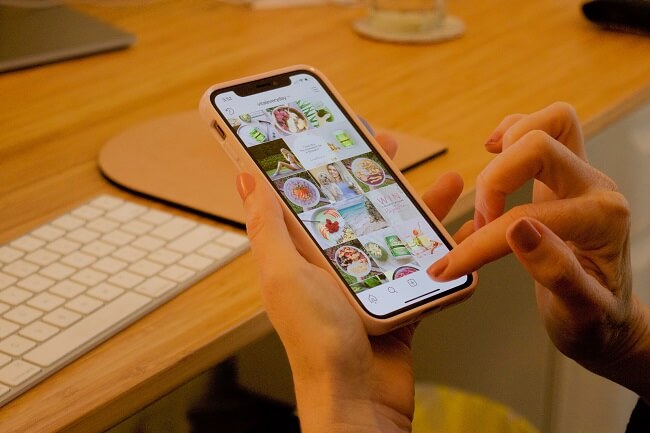LinkedIn may find label itself as strictly business, all the time. But the reality is that it is a social network, just like any other. And just like all of the other social networks, LinkedIn relies on an algorithm to send content to its users. And like any other algorithm, it relies on a number of decision-making factors. If you want your LinkedIn posts to be seen by the right people, you need to know the reasons.
And this is where the latest LinkedIn update comes in and knowing what this means for your business will make all the difference in your marketing efforts.
So, What is the LinkedIn Feed Algorithm Update?
LinkedIn has updated its algorithm and changed the way content ranks people’s feeds. Additionally, users have more control over their feeds and can block certain categories of content from being displayed.
You can also choose to view additional content from thought leaders, industry experts, and creators outside of your network. The goal of this update is to create a more personal and relevant experience while creating meaningful conversations and interactions between users using the functionality available – which includes LinkedIn Stories.
What New Controls Have Been Provided to LinkedIn Users?
Recent changes to LinkedIn’s algorithm are aimed at improving user satisfaction. In particular, they need to identify any abuses and punish them. To find them, LinkedIn gives the user more control in the form of “filters” to customize the news feed. Their use will send explicit cues to the algorithm.
If you know how to create your content to make the algorithm easier, it can be beneficial for you. However, if you fall short, you may find your content buried in LinkedIn purgatory. So how does the LinkedIn algorithm work? Get ready for some notes, folks!
LinkedIn will decide whether your post is spam or genuine content LinkedIn’s algorithm measures various factors to predict how relevant any given post is to your audience. This will organize your content into one of three categories: spam, low quality, or high quality. Here’s how the platform will determine where your post belongs:
- Spam: If you use bad grammar or include too many links in your post, you may be flagged as spam. Avoid posting frequently (more than every three hours) and don’t tag too many people (more than five). Hashtags like #comment, #like, or #follow can also highlight the system.
- Low quality: These messages are not spam. But they also don’t follow interior best practices. If you can’t make your post attractive, the algorithm considers it low quality.
- High Quality: These are messages that meet all of LinkedIn’s content recommendations: The post is easy to read, encouraging answers to the question, with three or fewer hashtags, contains strong keywords, and only tag the people who are most likely to respond.
LinkedIn Tested Post
If the LinkedIn algorithm has already determined that you are no longer posting spam, it will send your post to some of your followers. If there’s a lot of engagement (likes! comments! shares!), LinkedIn will instantly send it out to more people. But if no one bites at this stage, LinkedIn will no longer share it. This all happens within the first hour of the post being shared, which means it’s the make-or-break time!
What Users Will See More of In the Feed?
It’s not exactly a matter of what users will see more of, but rather, how will they be able to customize their viewing experience.
Less surveys and polls
Users complained about the presence of all polls in their news feed. As is often the case with the launch of a new feature, LinkedIn is likely to encourage its use by artificially increasing its visibility.
As a result, surveys effortlessly get thousands of views, which can be expanded. They are used indiscriminately unless those who create them understand that the real value of LinkedIn is in the interaction. Nonsensical polls flooded users’ news feeds so much so that a wave of protest arose.
Report and/or block content and authors
A fundamental change is the ability for users to report content that has disturbed them without violating the platform’s rules. What’s new is that LinkedIn’s algorithm now takes this explicit feedback into account.
How Can Marketers Adapt?
To help marketers adapt, we have a few easy things that you can do to leverage LinkedIn’s new update.
Emphasize engagement with a question or challenge
Always post to let superfans know your new thing isn’t working Be active elsewhere on LinkedIn by interacting with other posts. You never know when your name might inspire someone to come to check out your latest post, right? Develop all your best practices for peak attendance.
LinkedIn delivers your compelling content to many users
If your post engages, a powerful algorithm will begin sending your content to a wider audience. Who can see your post from here depends on rating signals:
- How closely related – The closer you are to the viewer, the more likely they are to see your content. This means people you have worked with or have worked with or people you have been with in the past.
- Interest in the subject – LinkedIn’s algorithm determines a user’s interests based on the groups, pages, hashtags, and people they follow. If your post is about topics or companies that align with the user’s interest, well…that’s great news!
- Connection option – This “probability of engagement” factor is measured in two ways. First, how likely is it that a user will respond to your post? (This is based on their past behavior and what they have done with your past messages.)
- How much participation did the post itself get overall? – If it’s a warm-up post that generates a lot of conversation, a lot of people probably want to join in, too.
Schedule your posts for maximum exposure as most of your followers are normally online
Generally, the best time to post on LinkedIn is 9:00 AM on a Tuesday or Wednesday. But every audience is unique. One of the best ways to increase engagement with your posts is to increase the number of people who see them. There are two main tactics creators can use to gain more traction on LinkedIn:
- Tag relevant companies and members using keywords strategically including relevant hashtags.
- Branded hashtags also have great potential here. If you create a hashtag worth following, chances are the algorithm will show up in the posts it uses with the hashtag’s followers.
The End Goal? Keeping The Feed Authentic and Useful
LinkedIn has seen engagement levels grow for six consecutive quarters. This means that with it has grown the opportunity for businesses to use it as part of their marketing and recruitment strategies.
However, these recent changes have forced some companies to rethink their approach. They can no longer use “growth hacks” to attract large audiences and instead, marketers and content creators must focus on creating authentic high-quality content that will drive engagement and attract audiences.





Tell us your thoughts in the comments